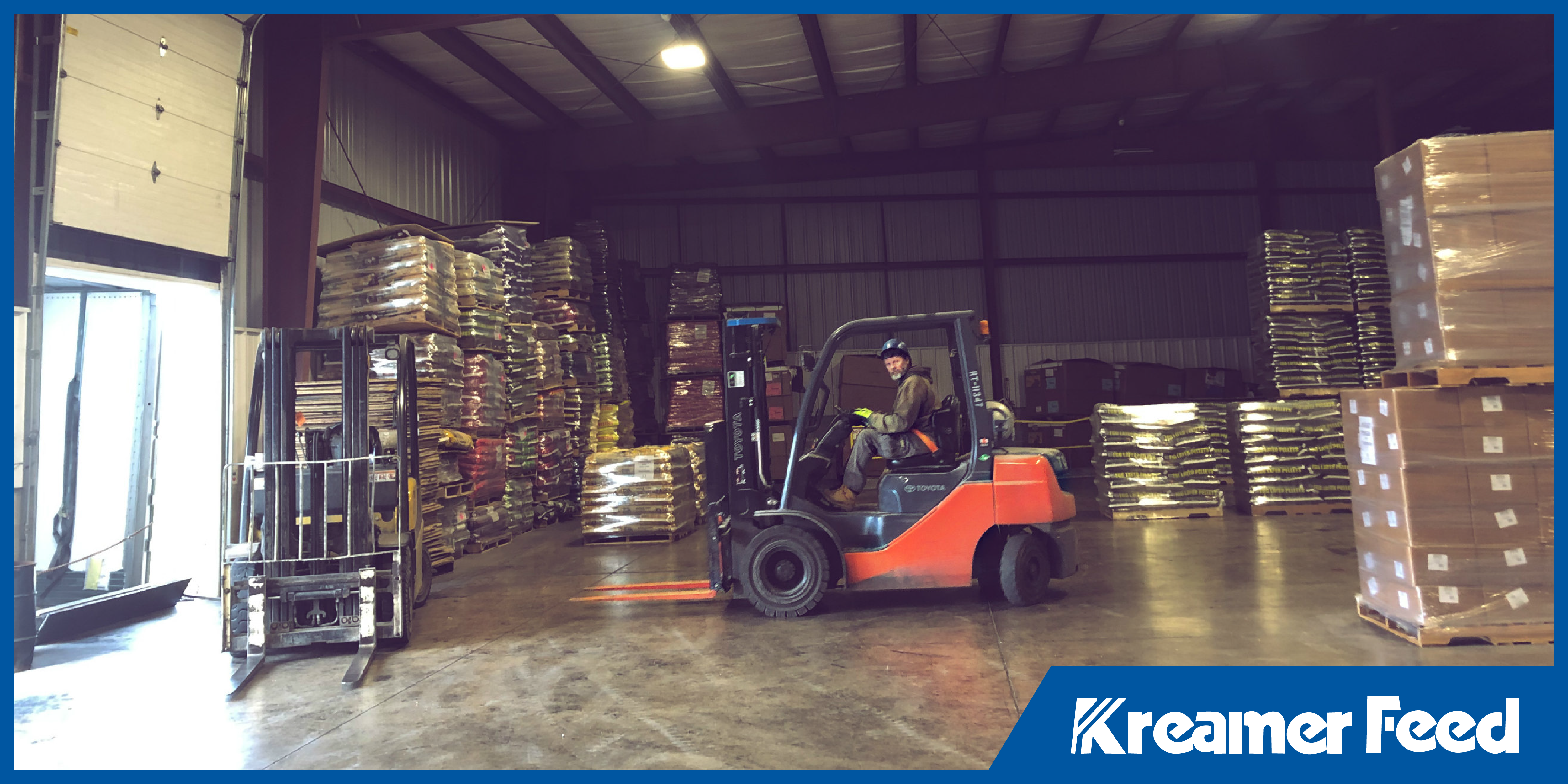
Great nutrition starts with great feed, but even the best formula can fall short if it isn’t stored correctly. Over the years, we’ve heard a lot of assumptions about how to store livestock feed, and some of those ideas may be doing more harm than good.
At Kreamer Feed, we’ve been crafting high-quality poultry and livestock feed since 1947. We know how important proper storage is to maintaining feed quality, and we’re here to help you separate fact from fiction.
Let’s bust some common feed storage myths and explore what really keeps your animals nourished and your feed protected.
Myth 1: Feed is fine as long as it’s indoors.
Truth: Getting feed out of the weather is a great first step, but not all indoor spaces are created equal. Moisture, pests, and temperature swings can all impact poultry feed freshness and lead to mold, spoilage, or livestock feed contamination.
Tip: Store feed in a dry, cool, and well-ventilated area. Avoid storing directly on concrete, which can attract moisture. Use pallets or bins to keep feed elevated and sealed.
Myth 2: Plastic bins are always the safest option.
Truth: Some plastic containers can trap moisture or allow condensation inside, especially in environments with fluctuating temperatures. If not properly sealed, they can also invite pests.
Tip: Choose food-grade, airtight bins with tight-fitting lids. Check bins often for moisture buildup. For large volumes, use purpose-built feed storage containers designed for safe storage for animal feed.
Myth 3: Old feed is still good if it smells okay.
Truth: Smell is only part of the story. Nutrient levels, especially vitamins and fats, degrade over time. Even if the feed seems fine, its nutritional value may have dropped, particularly in organic or non-GMO feeds that don’t contain synthetic preservatives.
Tip: Practice FIFO (First In, First Out) rotation to ensure you’re always using the oldest feed first. Keep feed labeled and dated to help manage shelf life. This supports animal feed preservation and optimal nutrition.
Myth 4: All animals can eat the same feed, stored the same way.
Truth: Different species and life stages have different feed needs and different storage risks. Poultry feed, for example, is more sensitive to spoilage due to its finer texture and higher fat content.
Tip: Use species-specific storage methods when needed. Keep poultry feed storage cool and dry, and avoid storing it longer than recommended. This helps maintain freshness and reduce waste.
Myth 5: Once feed is in the bin, there’s nothing else to worry about.
Truth: Bins and containers still require regular cleaning. Residue buildup can attract mold, bacteria, or insects, even if the feed itself is fresh.
Tip: Empty and clean your storage bins regularly. Inspect for signs of spoilage or pests. Ongoing bin maintenance is a key part of feed quality maintenance.
Feed Storage Done Right with Kreamer Feed
Following simple livestock feed storage tips can help you get the most out of every bag. From reducing waste to preventing contamination, a few smart adjustments in your storage practices can make a noticeable difference in animal health and performance.
Visit KreamerFeed.com to learn more about proper animal feed storage, feeding solutions, and nutritional support.
Because with feed, it’s not just what’s inside the bag that matters. It’s how you store it that keeps your animals healthy and nourished.